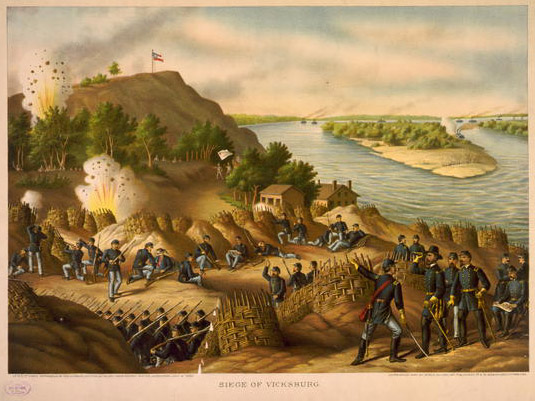By SIU Press
After a series of victories through Mississippi early in the spring of 1863, General Ulysses S. Grant’s Army of the Tennessee had reached the critical point in its campaign to capture Vicksburg. Taking the city on the hill would allow the Union to control the Mississippi River and would divide the Confederacy in half. Confederate morale was low, and a Union victory in the war appeared close before the start of Grant’s assault against General John C. Pemberton’s Army of Mississippi.

But due to difficult terrain, strong defenses, and uncoordinated movements, the quick triumph Grant desired was unattainable. On the afternoon of May 19, with little rest, preparation, or reconnaissance, Union forces charged the Confederate lines only to be repulsed. A respite between the assaults allowed both sides to reinforce their positions. Early on May 22 the Union artillery sought to soften the stronghold’s defenses before the general attack, but despite the Union forces’ preparation, the fighting proved even more disorganized and vicious. Again Grant failed to move Pemberton. Not wanting to risk more soldiers in a third attack, Grant conceded to the necessity of laying siege.
–
From Wikipedia:
“Vicksburg was the last major Confederate stronghold on the Mississippi River; therefore, capturing it completed the second part of the Northern strategy, the Anaconda Plan. When two major assaults against the Confederate fortifications, on May 19 and 22, 1863, were repulsed with heavy casualties, Grant decided to besiege the city beginning on May 25. After holding out for more than forty days, with their supplies nearly gone, the garrison surrendered on July 4. The successful ending of the Vicksburg Campaign significantly degraded the ability of the Confederacy to maintain its war effort. This action, combined with the surrender of Port Hudson to Maj. Gen. Nathaniel P. Banks on July 9, yielded command of the Mississippi River to the Union forces, who would hold it for the rest of the conflict.
“The Confederate surrender on July 4, 1863 is sometimes considered, when combined with Gen. Robert E. Lee’s defeat at Gettysburg by Maj. Gen. George Meade the previous day, the turning point of the war. It cut off the states of Arkansas, Louisiana, and Texas from the rest of the Confederate States, effectively splitting the Confederacy in two for the duration of the war. The Union victory also permanently severed communication between the Trans-Mississippi Department and the balance of the Confederacy.”
*
Siege of Vicksburg

This colorful lithograph recounts the 1863 battle at Vicksburg that took place on water and land.
CREDIT: “Siege of Vicksburg–13, 15, & 17 Corps, Commanded by Gen. U.S. Grant, Assisted by the Navy Under Admiral Porter–Surrender, July 4, 1863,” 1888. Prints and Photographs Division, Library of Congress. Reproduction Number LC-USZC4-1754.
–
Comments welcome.
Posted on May 9, 2019


